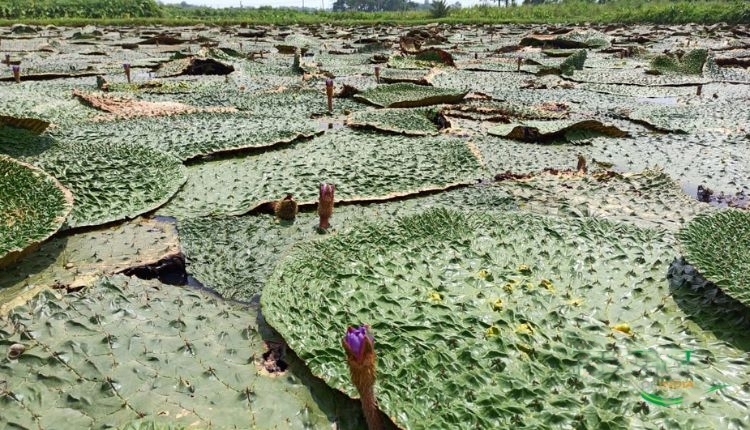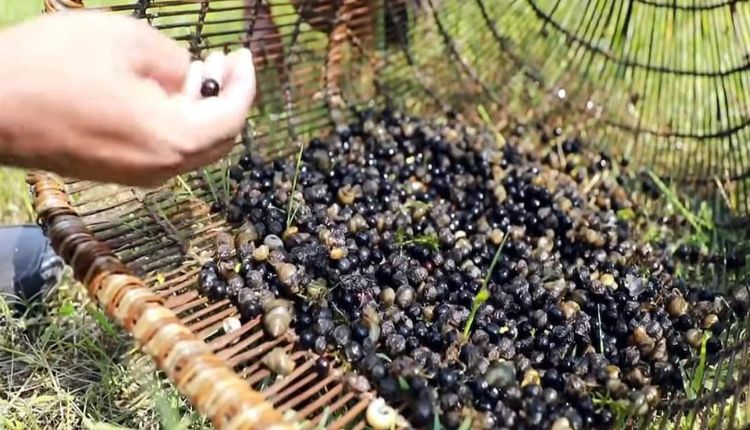Foxnut Plant Lifecycle
“From seed to snack, discover the extraordinary journey of the humble makhana, a story of nature’s transformation into a delicious and healthy treat.”

Foxnut Plant Lifecycle: From Bud to Seed
Follow the life cycle of a seed and witness its journey from a small seed to a superfood. The Makhana plant commonly referred to as fox nut or prickly lily goes through a remarkable process that is as exciting as the nut is beneficial to the health. It is time to start our wonderful discovery of the development of the Makhana plant, and how it transforms from a blooming flower to an energizing seed.
Makhana, popularly known as fox nut or prickly lily, is a highly nutritious food plant widely grown in the Indian state of Bihar. Known for its organic cultivation methods, it does not require the use of fertilizers or pesticides, making it a safe and healthy choice for consumption. This blog post aims to explore the fascinating lifecycle of this extraordinary makhana food plant.
Stage 1: Flowering of the Foxnut Plant
Flowering is the first stage involved in the production of the foxnut plant. This phase can be said to be the birth of the fox nut and the foundation phase through which it grows.
Process of Flowering
The flowering process initiates with the sprouting of a bud that subsequently blooms into a foxnut plant flower. The flower then matures to form a fruit, which houses the seeds. These seeds, when sown or naturally dispersed, give rise to new foxnut plants, thus continuing the cycle
Significance of Flowering
The flowering stage is important because this is the period in the developmental process of a Makhana plant where the seeds, which are the future plants, are produced. If this plant does not flower, it does not produce seeds and thus, there will be no new crop of Makhana plants. Hence why, the flowering stage is crucial for the reproduction of the species.


Stage 2: Growth of the Fox Nut Plant
Once the makhana seeds plant has been sown and germinated, the next stage in the lifecycle of the Makhana plant is growth. During this phase, the seedling grows into a mature plant, ready to reproduce and contribute to the survival of its species.
Characteristics of the Fox Nut Plant
The mature Fox Nut plant is a sight to behold. Its beautiful floating leaves with a green upper surface and deep purple lower surface are supported by stout, prickly ribs. It’s an oval-shaped plant that requires frequent standing water. The plant grows best in soil with a clay, silt, and sand texture, requiring 6 or more hours of direct sunlight. The Fox Nut plant produces foxnut seeds, which are highly valued for their nutritional benefits.
Factors Affecting Growth
Various aspects may have an influence on the growth of the Fox Nut plant.. First of all, it was discovered that the plant grows well in a particular type of soil – clay, silt, and sand mixture. In addition, there should be adequate exposure to light and heat, preferably direct sunlight, for a minimum of six hours every day. Finally, the plant grows in some standing water, which means its development is perfect for the ponds and fields climates.
Stage 3: Formation of Phool Makhana
Once the Phool Makhana plant reaches maturity, it enters the next stage – the formation of Phool Makhana. This stage is marked by the development of fruits that contain seeds, which are the actual ‘Makhana’ that we consume.
Process of Phool Makhana Formation
The process of Phool Makhana formation begins with the maturation of the fruit. As the fruit ripens, the seeds inside it mature and harden. Once they reach the appropriate hardness level, they become ready for harvest.
Conditions Required for Formation
The formation of Phool Makhana requires specific conditions. These conditions include the right temperature, an adequate amount of sunlight, and a sufficient supply of nutrients from the soil. If these conditions are met, the plant can successfully produce Phool Makhana.


Stage 4: Harvesting and Processing
The next stage in the lifecycle of the Makhana plant is harvesting and processing. During this phase, the mature seeds are collected, cleaned, and prepared for consumption.
Methods of Harvesting
The Makhana seeds are harvested by experienced fishermen who sweep the pond or field floor and form heaps of sunken seeds. These seeds are then scooped out from the bed of the pod with the help of horn-shaped split bamboo or small nets. The collected seeds are thrashed by feet to remove any membranous cover.
Processing Techniques
The processing of Makhana seeds is a labor-intensive task requiring specialized skills. The seeds are first dried under direct sunlight, then preheated and tempered. They are made to pass through different sizes of sieves for grading based on size and quality. The graded seeds are heated in special cast iron pans and stirred continuously. Once they begin to crackle, they are hit with a wooden hammer, causing the seed coat to break and the expanded kernel to pop out. The seed coat is then removed manually to reveal the Makhana.
Stage 5: Makhana Seeds
The final stage in the lifecycle of the Makhana plant is the Makhana seeds. These seeds are the end product that we consume as a superfood. They are rich in nutrients and offer numerous health benefits.
Characteristics of Makhana Seeds
Makhana seeds are oval and have a hard texture. When processed correctly, they pop to form a soft, chewy, and delicious edible product. These seeds are rich in proteins, carbohydrates, fiber, magnesium, potassium, phosphorus,iron, and zinc. They are also low in calories, making them an ideal snack for weight management.
Significance of Makhana Seeds
The significance of Makhana seeds lies in their health benefits. They are known to promote heart health, manage weight, and control diabetes. Moreover, they are believed to possess anti-aging properties and are used in traditional Chinese and Ayurvedic medicine. Furthermore, these seeds play a crucial role in the plant’s lifecycle as they carry the potential to grow into new Makhana plants, thus ensuring the propagation of the species.
In conclusion, the lifecycle of the Makhana plant is a fascinating journey from bud to seed. Each stage of the lifecycle holds its unique significance and contributes to the propagation and survival of the plant. The end product, the Makhana seeds, are not just a source of nourishment for us but also carry the legacy of the plant, ready to give rise to a new generation of Makhana plants.
The Lifecycle of the Makhana Plant
Understanding the lifecycle of the Makhana plant gives us a deeper appreciation of this amazing superfood. It is a testament to nature’s ingenuity and the power of life to regenerate itself. So, the next time you enjoy a handful of Makhana, remember the incredible journey it has been through – from a simple bud to a nutritious seed.